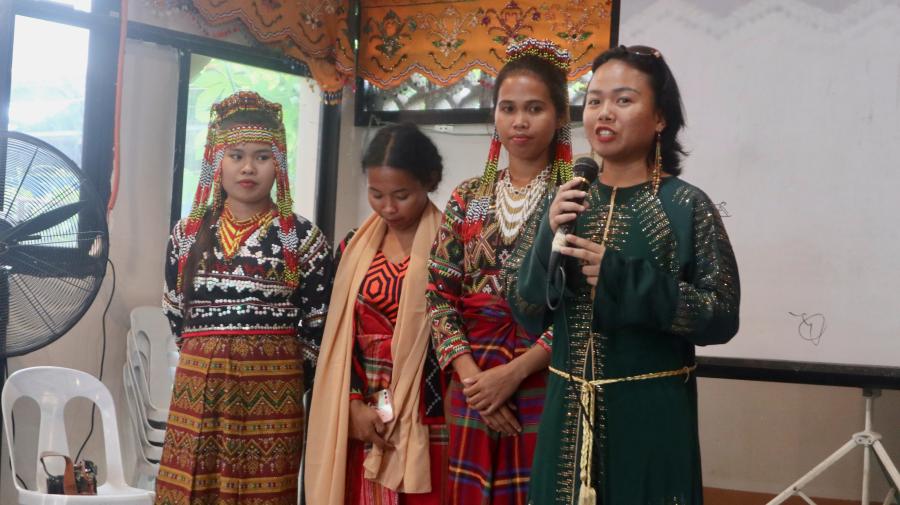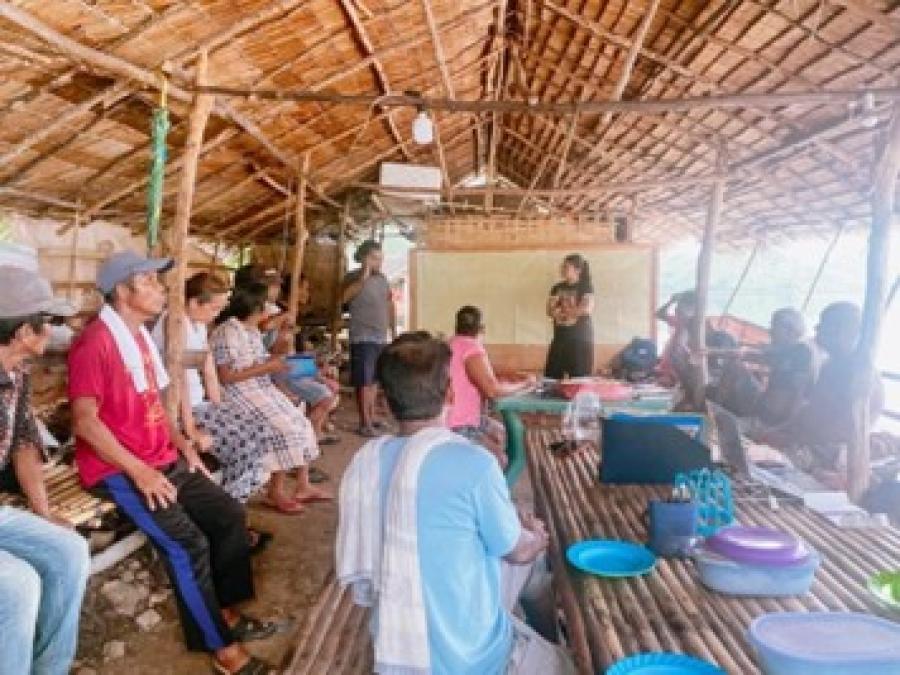As colonists and multinational corporations have moved into their areas, Agta are forced to change their economic strategies. Today, they are organizing and pressing claims for their lands.
The Negritos of the Philippines are comprised of approximately 25 different ethnolinguistic groups, widely scattered throughout the archipelago, totaling an estimated 15,000 people. All are or were hunter-gatherer societies. Today they are found in various stages of deculturation, and most are involved in agriculture.
I will describe the recent history and present circumstances of one of these groups, the Casiguran Agta (or Casiguran Dumagat) of northern Aurora Province. I will also touch on the circumstances leading to the present state of the agta, and make a prediction for their future.
Historical Background
In June 1983, the Agta of Casiguran numbered 616 individuals. The area they occupy is about 700 km²; about half is covered by primary rainforest, although the bigger trees have been thinned by loggers during the last two decades.
The Agta are by no means only recently exposed to outsiders. Since at least the turn of this century they have had increasing contact with Filipino immigrant homesteaders, military forces, municipal politicians, multinational corporations, and government development agencies.
In spite of these acculturative forces, the Agta were still living primarily as seminomadic hunters when my wife and I began to work with them 22 years ago. Throughout the 1960s, the primary economic activity of the adult males was hunting deer and wild pig with bow and arrow. However, for at least the last century their economy has revolved around an exchange relationship between the Agta and lowland Filipino neighbors. Until recently, the main feature of this exchange was the trade of wild meat for starch foods. In 1983, however, 24 percent of Agta families cultivated small slash-and-burn gardens.
Major Acculturative Forces on the Agta.
The Agta live in an environment undergoing traumatic change. I can only mention here some of the major causes of this change. The variable probably introducing the most change into the Agta ecosystem is the Philippine population explosion, which has pushed thousands of landless Filipino homesteaders into the remote Casiguran valley. The Agta, who before WWII had roughly 90 percent of the area to themselves, with a population density of about 1.3 people/km2, now find themselves viewed as landless squatters on their own ancestral lands, crowded in by a population density of 44 people/km2, and increasing daily.
A second set of change-causing forces has been multinational corporations. These consist of several logging companies(1), and the Acoje Mining Co. These corporations caused tremendous ecological change as they bulldozed roads directly through Agta settlements and hunting and fishing grounds, destroyed forests, and hired Agta as laborers. Such roads acted as funnels for colonists pushing into previously inaccessible areas.
In 1914 a Filamarican military force precipitated a major change in the Agta way of life. Led by an American, Captain Wilfrid Turnbull, who was directed to "bring [this] wild tribe under government control," a Philippine Constabulary detachment moved 150 Agta families onto a reservation to take up farming. According to Turnbull's own report, groups of reluctant men were even chain-ganged together and taken out daily to clear forest land for planting.
In January 1975 the 55th Philippine Constabulary Battalion made a renewed attempt to again settle all of the Agta onto this same reservation. The problems with this program have been described elsewhere. Several other development agencies have attempted community "aid" programs for the Agta, with very little success. These have included the Commission of National Integration, the Panamin Foundation, and the Department of Education. The usual goals of these programs were to get the Agta to cease their nomadic way of life and to take up agriculture.
Other significant ecological variables which have had an impact on the Agta culture are diseases, firearms for hunting, new types of fishing by lowland Filipinos (with dynamite, pesticides and electric rods), a government road built into Casiguran in 1977, transistor radios, commercial liquor, and the arrival of commercial rattan buyers into the area in the late 1970s.
Ecological Effect on the Agta Population
How have the Agta adapted to all these variables? One overall way to find out if a human group is adapting to its changing environment is to measure mortality patterns. If a tribal population is not growing, it is usually an indication that something is wrong. When one looks at the Agta population parameters, it becomes obvious that something is out of balance. My preliminary data show that the Agta population is in a slow decline of minus .3 percent per year. This is caused by a high death rate, not a low birth rate or emigration. Our data, based on several years' records, show that the Agta have an alarming demographic pattern. Though women have a high total fertility (7.3 live births per woman over age 45), child mortality is 46 percent, and life expectancy at birth is only 22 years(2).
The main causes of death among the adults are tuberculosis, pneumonia, homicide,(3) leprosy, alcoholism and, among females, complications from childbirth. The general health of the Agta today is poor and malnutrition levels are high.
Severe game decline in the last decade has forced most Agta to give up trying to live by hunting. The Agta themselves have caused this decline, as they are (or were) increasingly pressured by outsiders to hunt with firearms. During the mid-1970s, Agta were sometimes taken out to remote areas by turbojet helicopters to hunt for the military. I observed large amounts of dried wild meat being exported by aircraft to Manila in 1975. In 1983, only 6 percent of the adult male person-workdays were spent hunting. Two-thirds of all hunting was done with rifles, only one-third with bow and arrow.
As the wild game and fish resources have declined, the Agta have been forced to adopt an alternative economic strategy: instead of trading meat for rice, they now trade labor. The vast majority of Agta economic activity in 1983 was spent in wage labor for lowland farmers, or in gathering and selling rattan to commercial buyers. The daily pay for Agta wage labor in 1983 was the equivalent of .72 US cents, plus a noon meal.
A Bleak Future for the Agta
The Agta are undergoing increasingly severe ecological stress, and may be on the verge of disappearing as a people. This impression is based on more than twenty years of personal observation. When we look at the question addressed in the title of this paper, we see that not only are their prospects for cultural survival bleak, even the hope for their biological survival is in peril. While Agta might learn to survive in a changing world as unskilled laborers, they certainly will not survive as hunters.
It is beyond the scope of this paper to discuss what might be done to help the Agta under their present circumstances. I am personally not optimistic that there is any realistic solution to halting the battery of new forces assaulting the Agta ecosystem.
We have attempted to help the Agta to develop some political awareness of their rights, and to gain legal claim to some of their own land. Last year we helped the Agta leaders form themselves into an incorporated Agta Foundation of Casiburan, which was formally recognized by the government on June 8th of this year. With this new recognition, we are now assisting Agta families in applying for land leases from the Bureau of Forest Development, under this bureau's new Integrated Social Forestry Program(4).
Footnotes
1. Logging, a major Philippine industry, was banned in Aurora Province in April 1979. It of course continues in other areas of the country. Present estimates are that the remaining Philippine forests are being deforested at the alarming rate of "one hectare for every three minutes".
2. Our comparisons based over a six-year period (1977-83) for the total population show a crude birth rate of 42/1000/year, and a crude death rate of 45/1000/year. During this time there were 157 live births and 166 deaths in the population.
3. Our pre-1977 data showed that 14 percent of the adult males died of homicide. Since 1977 there have been twelve homicides. This is a homicide rate of 276/100,000 per year, one of the highest on record.
4. The integrated Social Forestry Program of the BFD is by no means an ideal solution for solving the land problems of Philippine tribal minorities. But with a national population density today of 175 people/km2, and with tens of thousands of landless farmers migrating into frontier areas, it is certainly a lot better than other options.
Article copyright Cultural Survival, Inc.



